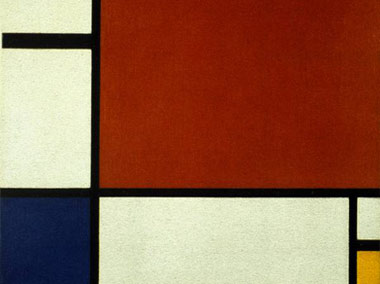What is Minimalism?
By Russell Shortt
Minimalism describes movements in art and design, film, literature and music where the work is stripped down to its most basic and raw. Content and form are kept to the most simplistic possible in an attempt to remove any indication of personal expression. By paring down materials, forms and procedures; minimalists wish to arrive at the very source of art before generations of artists tampered with it.
Minimalists aimed to allow the viewer to experience their work more intensely without the distractions of all the conventions, set thought processes and axiomatic symbols that bombard and suppress the human mind. It is rooted in the reductive aspects of Modernism, and is often interpreted as a reaction against Abstract Expressionism and a bridge to Post-modern art practices. Minimalist Art emerged in New York in the 1960s, it was regarded as a reaction against Abstract Expressionism but the artists in the movement did not like the tag of minimalist and actually did not see their work as being part of a movement at all.
But they were united in the ideal that their art was not self-expression. Though Minimalism derided the influence that artists had placed on the purity of art, they did have rots and influences in the geometric abstractions of painters in the Bauhaus, in the works of Piet Mondrian and other artists associated with the movement DeStijl, in Russian Constructivists and in the work of the Romanian sculptor Constantin Brancusi. Similarly to minimalism in art, literary minimalism is characterised by a less is more type mantra.
Russell Shortt is a travel consultant with Exploring Ireland, the leading specialists in customised, private escorted tours, escorted coach tours and independent self drive tours of Ireland. Article source Russell Shortt, http://www.exploringireland.net
http://www.visitscotlandtours.com
Article Source: http://EzineArticles.com/?expert=Russell_Shortt
http://EzineArticles.com/?What-is-Minimalism?&id=1961051
|

